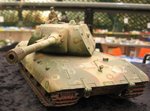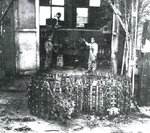- Thread starter
- #321
CharlesBronson
Senior Master Sergeant
armement:
1 x 105mm/65C33 with elevation restricted to 20 degrees, 45 rounds per gun, firing a 15.8 Kg APCBC with 900 mp/s muzzle velocity. rof: ~15 rpm, firing cycle is 1 round all 4 sec.
1 x MG 151/15 on turret with 250 rpg
Interesting, to have a MG-151/15 in the turret gave a good antipersonel-antiaircraft capabilities, better than a Browning M2 .50
Sturmgeschutz 27t - Porsche E-25 Jagdpanzer design




















